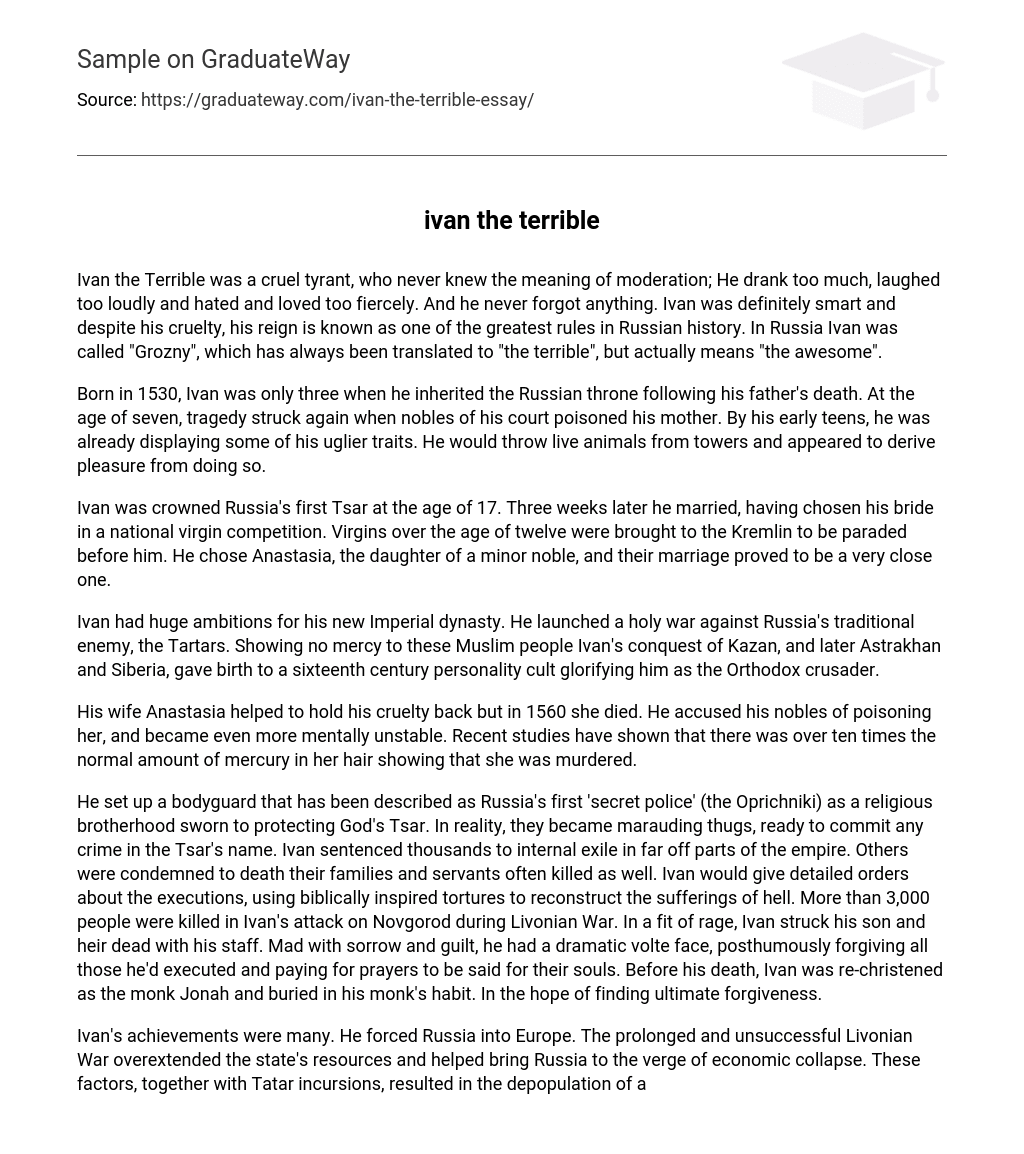Ivan the Terrible was a cruel tyrant, who never knew the meaning of moderation; He drank too much, laughed too loudly and hated and loved too fiercely. And he never forgot anything. Ivan was definitely smart and despite his cruelty, his reign is known as one of the greatest rules in Russian history. In Russia Ivan was called “Grozny”, which has always been translated to “the terrible”, but actually means “the awesome”.
Born in 1530, Ivan was only three when he inherited the Russian throne following his father’s death. At the age of seven, tragedy struck again when nobles of his court poisoned his mother. By his early teens, he was already displaying some of his uglier traits. He would throw live animals from towers and appeared to derive pleasure from doing so.
Ivan was crowned Russia’s first Tsar at the age of 17. Three weeks later he married, having chosen his bride in a national virgin competition. Virgins over the age of twelve were brought to the Kremlin to be paraded before him. He chose Anastasia, the daughter of a minor noble, and their marriage proved to be a very close one.
Ivan had huge ambitions for his new Imperial dynasty. He launched a holy war against Russia’s traditional enemy, the Tartars. Showing no mercy to these Muslim people Ivan’s conquest of Kazan, and later Astrakhan and Siberia, gave birth to a sixteenth century personality cult glorifying him as the Orthodox crusader.
His wife Anastasia helped to hold his cruelty back but in 1560 she died. He accused his nobles of poisoning her, and became even more mentally unstable. Recent studies have shown that there was over ten times the normal amount of mercury in her hair showing that she was murdered.
He set up a bodyguard that has been described as Russia’s first ‘secret police’ (the Oprichniki) as a religious brotherhood sworn to protecting God’s Tsar. In reality, they became marauding thugs, ready to commit any crime in the Tsar’s name. Ivan sentenced thousands to internal exile in far off parts of the empire. Others were condemned to death their families and servants often killed as well. Ivan would give detailed orders about the executions, using biblically inspired tortures to reconstruct the sufferings of hell. More than 3,000 people were killed in Ivan’s attack on Novgorod during Livonian War. In a fit of rage, Ivan struck his son and heir dead with his staff. Mad with sorrow and guilt, he had a dramatic volte face, posthumously forgiving all those he’d executed and paying for prayers to be said for their souls. Before his death, Ivan was re-christened as the monk Jonah and buried in his monk’s habit. In the hope of finding ultimate forgiveness.
Ivan’s achievements were many. He forced Russia into Europe. The prolonged and unsuccessful Livonian War overextended the state’s resources and helped bring Russia to the verge of economic collapse. These factors, together with Tatar incursions, resulted in the depopulation of a number of Russian provinces by the time of Ivan’s death in 1584. Nevertheless, he left Russia far more centralized both administratively and culturally than it had been previously. Ivan encouraged Russia’s cultural development, especially through printing. He himself wrote well, most his surviving writings are mainly political, his choice of words and his biting sarcasm were very unprofessional.





